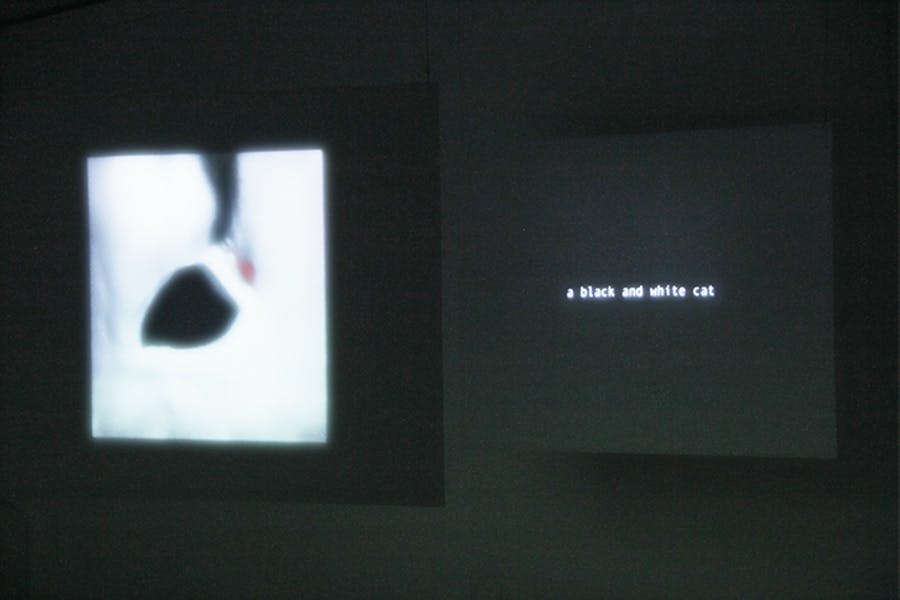Closed Loop (2017), Jake Elwes Courtesy Nature Morte In the essay ‘Art in the Time of the Artificial’ (1998), Frieder Nake, a pioneer of computer-generated art, describes the bewilderment surrounding Georg Nees’s works at the first exhibition of computer art in Stuttgart in 1965.
copyright by www.apollo-magazine.com

Uneasy questions confronted Nees’s drawings, created using a plotter following a programmed pattern to generate geometrical figures – was this authentic art? Who should be considered its author? We still appear to be asking the same questions today; the image itself is often outweighed by the process that constructs it.
In a moment when the information we consume and our patterns of digital behaviour are largely influenced by algorithmic processes, why does AI (artificial intelligence) art still confound us? Perhaps because the algorithmic image as aesthetic object takes us beyond the capacity of AI as a functional tool, turning it into a medium itself. The more interesting question might not be about who creates the art but why we consider it to be art in the first place. How do we surpass the obsession with whether AI art can convince us of its humanness and instead consider its larger implications on what we value as creativity? Unfortunately, the commercial positioning of AI art still emphasises spectacle and kitsch.
So,
when ‘Gradient Descent’, an exhibition at Nature Morte gallery in New Delhi (until 15 September) presented itself as ‘the first ever art exhibition in India to include artwork made entirely by artificial intelligence’, I was slightly wary. The exhibition, curated by the research collective 64/1, brings together coders and artists like Mario Klingemann, Memo Akten, Tom White and Anna Ridler, for a mini-survey of the visual possibilities of neural-network AI, which seeks to recreate the mechanics of cognition in the human brain. Klingemann, probably the most recognisable of the group, has been building these kinds of programmes for years, which he ‘trains’ on massive amounts of visual data to eventually create an output that, in the work on view here, continually merges his own webcam self-portraits with those of Old Masters. The video is titled 79530 Self Portraits: each successive image mutates to integrate the previous one at a giddy pace, facial features floating in a distorted, Baconesque world.
read more-copyright by www.apollo-magazine.com


Closed Loop (2017), Jake Elwes Courtesy Nature Morte In the essay ‘Art in the Time of the Artificial’ (1998), Frieder Nake, a pioneer of computer-generated art, describes the bewilderment surrounding Georg Nees’s works at the first exhibition of computer art in Stuttgart in 1965.
copyright by www.apollo-magazine.com
Uneasy questions confronted Nees’s drawings, created using a plotter following a programmed pattern to generate geometrical figures – was this authentic art? Who should be considered its author? We still appear to be asking the same questions today; the image itself is often outweighed by the process that constructs it.
In a moment when the information we consume and our patterns of digital behaviour are largely influenced by algorithmic processes, why does AI (artificial intelligence) art still confound us? Perhaps because the algorithmic image as aesthetic object takes us beyond the capacity of AI as a functional tool, turning it into a medium itself. The more interesting question might not be about who creates the art but why we consider it to be art in the first place. How do we surpass the obsession with whether AI art can convince us of its humanness and instead consider its larger implications on what we value as creativity? Unfortunately, the commercial positioning of AI art still emphasises spectacle and kitsch.
So,
when ‘Gradient Descent’, an exhibition at Nature Morte gallery in New Delhi (until 15 September) presented itself as ‘the first ever art exhibition in India to include artwork made entirely by artificial intelligence’, I was slightly wary. The exhibition, curated by the research collective 64/1, brings together coders and artists like Mario Klingemann, Memo Akten, Tom White and Anna Ridler, for a mini-survey of the visual possibilities of neural-network AI, which seeks to recreate the mechanics of cognition in the human brain. Klingemann, probably the most recognisable of the group, has been building these kinds of programmes for years, which he ‘trains’ on massive amounts of visual data to eventually create an output that, in the work on view here, continually merges his own webcam self-portraits with those of Old Masters. The video is titled 79530 Self Portraits: each successive image mutates to integrate the previous one at a giddy pace, facial features floating in a distorted, Baconesque world.
read more-copyright by www.apollo-magazine.com
Share this: